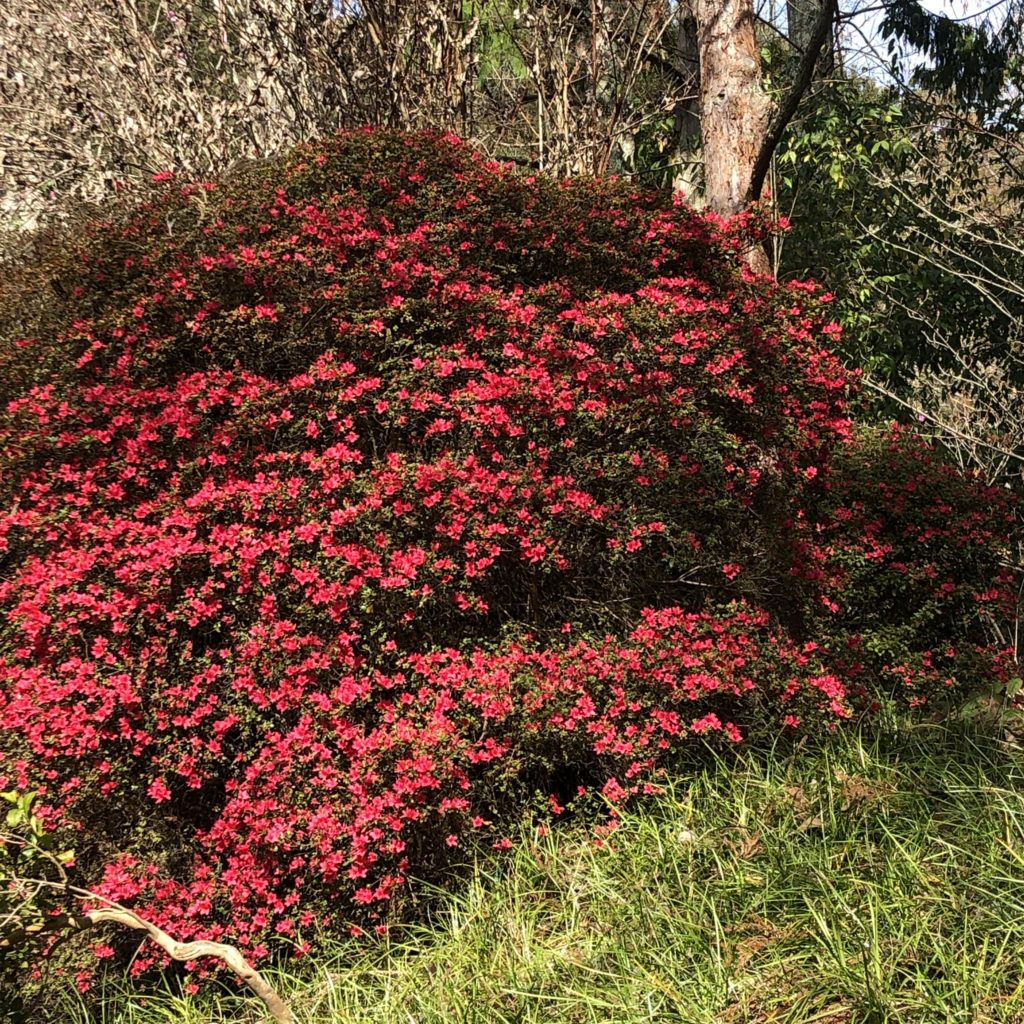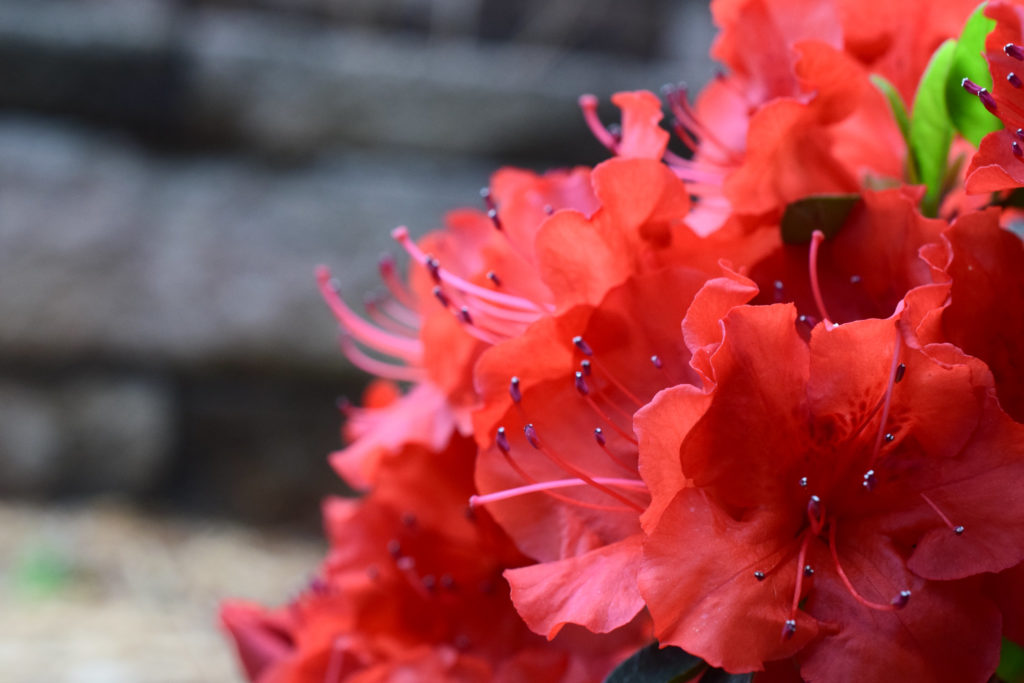Azaleas are a common and beautiful family of flowering shrubs. They are part of the rhododendron family, and there is a huge number of varieties to choose from for your garden. They have been cultivated for centuries. Evergreen Azaleas are native to Asia but grown all over the world usually in climate zones 6 through 9. Deciduous Azaleas are native to Asia, Europe, and North America. These are a bit more cold hardy and can be grown as far north as climate zone 4. These beautiful shrubs produce beautiful flowers, and in most cases grow best in shade or partial shade.

- Azaleas (Rhododendron subgenus Azaleastrum)
- Perennial
- Partial shade
- Moist and well-drained acidic soil (4.5 to 5.5 pH).
- Start seedlings or cuttings indoors in the late fall.
- Plant 48″ apart for healthy shrubs.
- Growing in containers:
Start single plants in at least 12″ deep, and 16″ wide pots
The pot should be about as wide as the foliage, move to a larger pot as it grows
Ensure good drainage and acidic soil
- Water regularly, keeping the soil moist.
- Climate Zones 6-9 for evergreen varieties
- Climate Zones 4-9 for deciduous varieties
Growing Azaleas
If you want to grow azaleas, the seed pods can be harvested in the late spring. The seed pod will start to turn brown in October or November. Once they have lost any green color, pick several and put them in a paper bag. Keep the bag sealed shut for a few weeks, to allow them to fully dry. They should split open, and the seed can be shaken out. These seeds will be ready to be planted in a few weeks, and it’s best to start them inside in winter, as already discussed.

Azaleas started from seed can vary somewhat in appearance from the parent plant, especially the open-pollinated types, when there are different varieties of azaleas or rhododendrons nearby. Those started from cuttings will grow up just like the parent plant in color and general appearance. They are easy to grow either way, and both will be beautiful. Seeds should be harvested in the fall and started in winter. Scatter the seeds over a shallow flat container, with drainage, in a mixture of sand and peat moss, or naturally acidic garden soil. Cover lightly. While germinating, water by gently spraying, and keep under grow lights or well-lit by sunlight from the windows. When they start to sprout, transfer the small seedlings to pots once they have a few leaves. Cuttings should be started in smaller pots at least 6 inches in diameter, and allowed to root and grow a bit over the winter.
For garden azaleas, pick the spot to grow them carefully. Azaleas need shade, they don’t do their best in full sunlight. They started as forest undergrowth, so planting them under a tree is a good idea, especially for those that also prefer acidic soil, like Red Oaks. They do well as decorative plants along a walk or in front of your house as well, just be sure that they can get a little sun but are well-shaded for a portion of the day. It’s important to pick an area where the soil drains well. Choose a variety that is good for your area, since there are some climate limitations to consider. The colors vary widely. Pick your favorite colors and a variety that will reach full growth at a size that works for your garden. These plants are often characterized as perennials, but they don’t die off and come back in the spring, they are permanent shrubs that are either evergreen or deciduous.
Azaleas also need space. They should be planted 48 inches apart, so they have room to grow to full size. Some types are sometimes grown closer together, as close as 36 inches apart to form a hedge. The healthiest types are grown as separate shrubs, and will still be a nice edge to a yard or garden in a long row. Mixed loamy and sandy acidic soil is really the best, with some good organic compost mixed in. Azaleas are hardy plants that don’t need fertilizer, but if you do use fertilizer at all, discontinue its use in the fall and winter. Mulch, on the other hand, is essential. This will keep the soil moist and protect the root system which is shallow but wide. The roots grow near the surface of the soil, about one foot deep, in total, and usually are about as wide as the surface plant.
Azalea Companion Plants
Companion plants for azaleas include Hydrangeas, Hostas, Blueberries, and Holly. A good tree to plant azaleas under is a Red Oak. These trees have profoundly deep roots and also require acidic soil. The oak foliage will provide the perfect shady spot for them too, and with the azalea shallow root system, they work very well together! It’s usually hard to plant azaleas near vegetable garden beds since most herbs and veggies require full sun, which is not the best thing for these shrubs.

Azaleas are poisonous, and it’s important to keep your pets and children from eating any part of these plants, though this is more of a problem with livestock, like horses or goats, which are more likely to try to eat them. They can also be a skin irritant, so when pruning these, wear gloves. There are some herbal extracts made from azalea, as well, but research any of these carefully!
Azalea Pests and Diseases
Nutrition is really important for azaleas, it’s important to note that sometimes soil that is not sufficiently acidic can cause the plant to not be able to get enough nutrients, especially iron. It’s uncommon for there to be a major problem, though it can happen sometimes. The most common pests include bark scales, leaf miners, stem borers, vine weevils, and lace bugs, all with specific species particular to azaleas and rhododendrons. Plant diseases include some familiar fungal infections like powdery mildew and leaf spot. Botryosphaeria canker is the most common fungal problem. Petal blight and leaf gall can also be minor issues. For the most part, these will not be major issues, azaleas are typically resistant to diseases and pests.
Azaleas are a great decorative shrub for most yards, and really add some brilliant beautiful color to some shady spots that would otherwise be unnoticed!
If you want to plan your azalea garden before planting, give our garden planner Hortisketch a try!

Contact Author
 info@gardensavvy.com
info@gardensavvy.com Recent Posts
- Smart Gardening: How Technology Is Revolutionizing Horticulture
- Understanding Gardening Zones: What You Need to Know
- The Right Tools For Your Gardening And Landscaping Needs
- Maximizing Your Harvest: Square Foot Gardening Chart for Beginners
- Holiday Garden Scents: Plants for Natural Aromatherapy in Your Home






